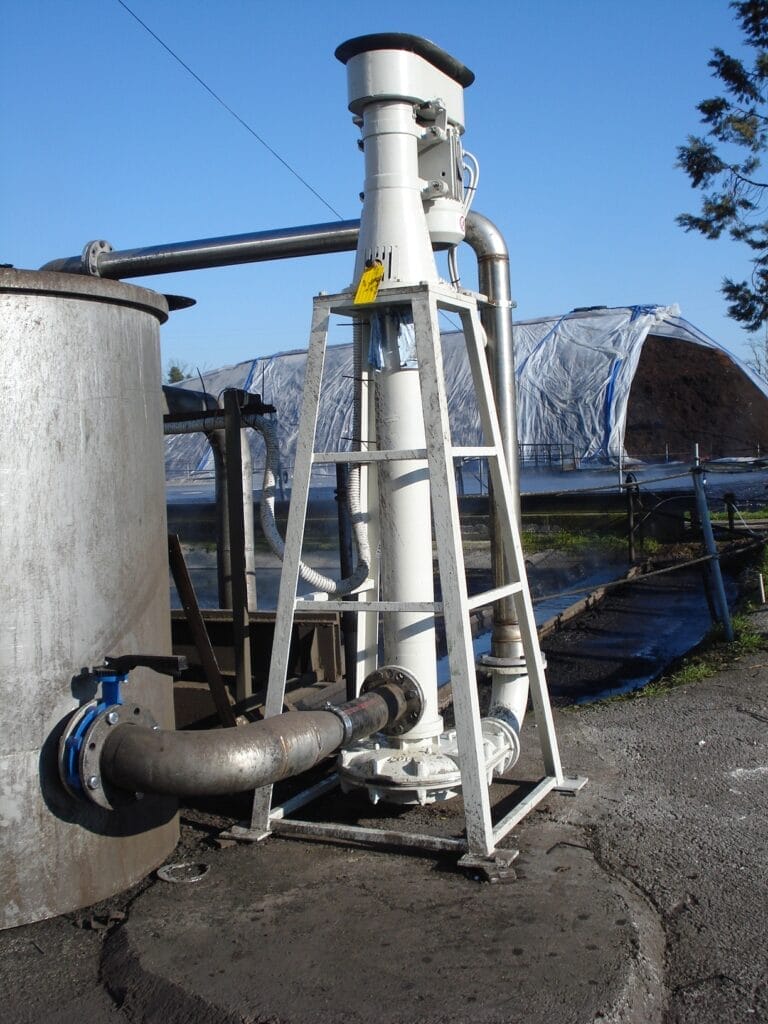Sewage sludge pumps
In this article we will explore the category of sewage sludge pumps.

This kind of sludge is the main residue of several purification treatments (mechanical, chemical, biological) to which the wastewater is subjected in order to be reintroduced into nature without damaging the ecosystem that receives it, whether it is sea, rivers, lakes or even surface soil.
Much of the overall energy consumption in a sewage treatment plant occurs during the entire process of slurry and sewage pumping. Therefore this procedure requires that the sewage sludge pumps are able to operate in the best way, by minimizing both consumption and wear that is due to friction.
The purification of wastewater is an integral part of the sustainable development of modern cities. According to a study by the IWA (International Water Association), only 20% of them are treated worldwide. In order to achieve the sustainable development goals defined by the UN Agenda 2030 and to face other critical factors such as the increase in human population and the scarcity of water worldwide, as well as the definition of environmental standards that become more and more severe, this share must significantly increase.
Treatment of sewage sludge
Before talking about the treatment of sewage sludge, it is useful to refer to Article 2 of Legislative Decree 99/1992 which identifies them as the main residue of purification treatments – especially sedimentation processes – to which wastewater is subjected.
They are classified as:
- domestic, if they derive from residential settlements and services, from human metabolism and from domestic activities;
- industrial, if they come from buildings or installations that are intended for commercial activities or services or for the production of goods, in which in many cases pollutants are present;
- urban, if they arise from domestic, industrial and commercial settlements and stormwater run-offs that flow into the sewers.
Treated wastewater often contains floating impurities, perishable materials and suspended substances that generate slurry, as well as dissolved organic materials and even bacteria. The pumps for the treatment of sewage slurry must be able to safely manage all these substances without losing efficiency over time because of premature wear.
In the sewage sludge there is a high concentration of pollutants which are removed from the waste water. This makes them comparable to waste. Therefore, before being used or disposed of, they absolutely need to be treated in order to eliminate any possible hygienic-sanitary problem.
The main techniques which are used for the treatment of residual purification sludge are:
- thickening, or reduction of the water content in the slurry;
- anaerobic digestion, that is the reduction of organic substances inside them (and possible recovery of energy from biogas);
- dewatering to minimize the presence of water in slurries, by limiting transport and disposal costs;
- drying, that is total evaporation of the liquid content through the use of heat.
Sewage sludge: fields of application
In Italy, properly treated sewage sludge can be:
- recovered to produce energy (through gasification) or for use in the agricultural sector, as fertilizers;
- disposed of in landfills or incinerators.
According to the data provided by ARERA (Regulatory Authority for Energy, Networks and the Environment), approximately 74% of properly treated sewage sludge is recovered; the remaining 26% is destined for disposal.
The agronomic field is one of the main reuse sectors. The treated sewage sludge is used on agricultural land as fertilizer. Its good content of organic and mineral substances such as nitrogen, potassium and phosphorus makes it particularly suitable for this use.
Thus, sewage sludge is a valid alternative to disposal. Moreover it is able to almost completely replace chemical fertilization and other types of organic fertilization.
Types of sewage sludge pumps
There are several types of sewage sludge pumps. They differ according to the needs, the characteristics of the waste water to be treated and the available resources:
- centrifugal ones are suitable for low viscosity slurry which contains very few solid particles;
- compressed air membrane ones are very useful to produce a consistent sludge crust, so to obtain a higher percentage of solid slurry;
- progressive cavity models are ideal for the treatment of thick slurry;
- rotary lobe ones are particularly suitable for high viscosity fluids.
We have a wide range of sewage sludge pumps, which mainly belong to high pressure types for filter presses. We have developed over 40 models for this purpose and they can be customized according to customer needs.
Our high pressure filter press sewage pumps are specifically designed for applications with abrasive and / or corrosive materials and they use a variety of special coatings: from rubber to hard PEMO alloy (750-800 HB), from stainless steel to hastelloy.
Characteristics of the pumps
PEMO Pumps sewage sludge pumps stand out for side suction on horizontal design. This configuration makes them more powerful than other similar products and above all it guarantees a greater resistance to wear.
In fact, thanks to this type of design, the seal must withstand only the supply pressure of the sucked slurry and not the high pressure of the pump discharge.
In this way it is also possible to simplify the flushing of the mechanical seal. In fact, the seal washing system is sealed so that there is no water or mud leakage during the cleaning cycle.
The flow rate when filling the filter press can reach 1500 m3 / h (6613 GPM).
Final pressure can exceed 294 psi (20 bar) for triple-stage models and for some dual-stage models and it can create a much drier crust of mud than single-stage pumps can do.
The mechanical seals are made of silicon or tungsten carbide. Mechanical seal lubrication can be done by using clean water at a minimum pressure of 30 psi or even by using glycol in a closed pressurized system.
Some of the PEMO Pumps sewage sludge pumps can also be configured in submerged or a vertical version.
